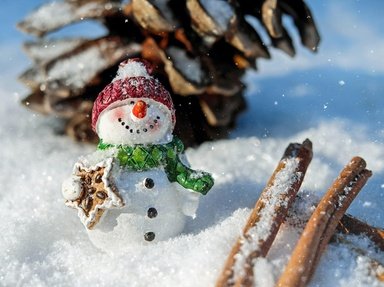Quiz Answer Key and Fun Facts
1. Cribs are crafted around the world to recreate the birth of Jesus in a manger. Which European region has the custom of adding other common folk from everyday village life to the crib?
2. Which South American capital city has a unique modern tradition of people using roller skates to attend the early morning Christmas Mass?
3. In the Scandinavian country of Norway which common household article is hidden on Christmas Eve?
4. Which American fast food company ran such a successful marketing campaign in the 1970s that eating at its outlets has become a Christmas tradition in Japan?
5. The oplatek or Christmas wafer that is shared during the meal on Christmas Eve in Poland is prepared similar to the host that is served during Mass in Roman Catholic churches.
6. How many days does the Las Posadas celebration in Mexico span?
7. The Ore Mountains are a chain of mountains found between the regions of Saxony and Bohemia. Which of these figurines is a traditional Christmas decoration from this region?
8. Another lesser known Christmas tradition involves hiding a pickle shaped ornament on the Christmas tree. The child to first find the pickle will then receive an extra present. Is it true that this tradition originated in Germany?
9. What uncommon 'ornament' are you likely to find on a Christmas tree in a Ukrainian home?
10. The region of Catalonia in Spain has a unique Christmas tradition involving a little piece of wood called the Tio de Nadal (Christmas log). On which day is the log first set up?
Source: Author
zorba_scank
This quiz was reviewed by FunTrivia editor
stedman before going online.
Any errors found in FunTrivia content are routinely corrected through our feedback system.


